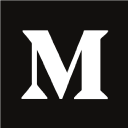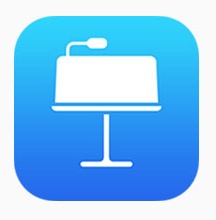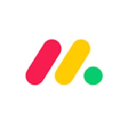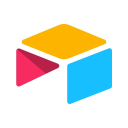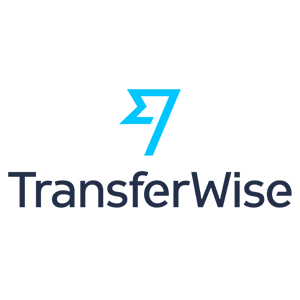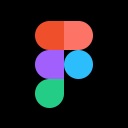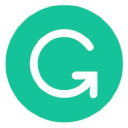How I Generated $350K In 8 Months Matching Startups With Designers
Hello! Who are you and what business did you start?
I’m Danielle the founder of Design Match. I’m a digital nomad originally from Canada. We help match startups with the perfect designer for their business. Although our clients range from first-time founders to large enterprises, our focus has always been on startups.
While building Design Match, I have also traveled to 10 different countries.
Between our two entities, we have made $350,242.25 in less than 8 months of operation with zero dollars spent on marketing. Our MRR is now up to $35k.

So many founders overlook design, thinking that it’s simply about colors and fonts. Yet, design is the bridge between your customers and your product's value.
What's your backstory and how did you come up with the idea?
Before founding Design Match, I was a product designer for startups all over the world. My work has been used by over 300M users, with that number increasing every day.
About eight years ago, I left my home in Montreal, Canada, for something new.
Every day was starting to feel the same, and I felt like I had the potential to be more and to give more. I made this promise that for the next year, I would try and be uncomfortable. I would put myself in new situations that pushed my beliefs and boundaries to see who I could be.
As I traveled my income surprisingly rose, and creators started asking me how I made so much money as a design freelancer.
I started an online school called Design Club which taught designers how to find clients and work remotely. The issue was that not everyone had equal access to opportunities. There’s unconscious bias when it comes to hiring global talent, and I wanted to see if there was anything I could do about that.
As my workload filled up, I started matching my clients with designers in my network. I loved it and was good at it, and I realized this was a great business, and Design Match was born.
I made a website and put it online, and our MRR for our first month was over 20K with leads organically coming in from LinkedIn. This is when I knew, I had something big.
Take us through the process of building the first version of your product.
As a designer, jumping into the product design part was super fun. I worked with my designer to create all the front-end designs. Yet, when it came time to develop, I was shocked by the price it would cost to build. Agencies were quoting me $400k and over a year of development.
So I decided to go no-code and built on Bubble. I felt like the designer side of the platform did not need much validation as it’s simply a place where designers can find jobs, upload their portfolios and manage those jobs.
Yet, the client side of the experience was much more opinionated. At Design Match, we have a fully asynchronous sales cycle. I was told this wouldn’t work since our average contracts are over $6,000 per month. Yet, our clients loved the no-pressure approach to finding a designer. We built the first client experience in WordPress and using Loom for sales, we created an MVP sales experience.
Since then, we’ve iterated and improved the client experience significantly, but I’m so happy I went with ultralow code for the client experience as it changed quite a bit from inception.
Solve a problem that already exists. I spent the first few years of my entrepreneurial career trying to convince people they had a problem. When I found a need, and just solved it better - things got much easier.
Describe the process of launching the business.
We never really launched, which is funny to stay. We incorporated in December 2021, bought insurance for our business, launched our website, and in 2022 we already had our first customers.
The costs were relatively low to start, and I used my consulting money to finance. Since the start of the business, I’ve invested $40k of my own money into product development and some early hires.
One thing we did that was special was we hired a brand strategist right away. We have a pretty comprehensive brand book that talks a lot about our unique value proposition, how we communicate as a company, and our values. This was vital at the beginning as it meant that, for the first time, I wasn’t the business.
Normally, I would write the copy, landing page, and messaging. As a result, the business was kind of just my beliefs spread out on a landing page. By having an additional person helping me create the brand, there was a clear separation between “what would Danielle do” and “what would Design Match do.” This still helps me greatly to this day.
The second lesson I learned was, a good product doesn’t take much marketing. I had heard from many gurus that great products fill needs and existing desires.
In the past, I created what I thought people wanted and would try and convince them to buy it. With Design Match, I looked at what people have been asking for, and what founders needed and just created a solution.
Since launch, what has worked to attract and retain customers?
Since day one, we’ve focused on SEO. We don’t have a lot of traffic but a high website conversion rate. We focused on the user journey to create a no-brainer offer for website visitors who are actively searching for designers.
I used AI writing tools to help write the initial articles, and 8 months later, they are bringing in a good percentage of our traffic. I created these evergreen articles that spoke to founders in specific industries and educated them on the ROI of hiring a designer. We now have a copywriter who is working full-time with us.
Here are our favorite marketing tools:
- SurferSEO
- Jasper
- SalesFlow
- Quuu Promote
We also used LinkedIn automations to connect with our target market, and this worked well. We never pitched them anything, we just connected and let them explore our profile.
What was a huge fail was email marketing! We send SO many emails, and people even replied to tell us how amazing our email sequence was - but they didn’t convert. I think the issue with emails is hiring, especially hiring a designer is not something you can convince someone to do.
For an email to work, there already needs to be an initial idea that they are trying to build, and we need to catch them before they find that person to build it.
I think being present where the founders are is a better solution for us. We’ll be expanding to paid media next year.
How are you doing today and what does the future look like?
As of today, we are profitable, which is great. We have an 89% match success rate at the moment. This means that when a client is matched with a designer, 89% of them move forward into an engagement.
We’re focusing on sustainable scaling. Our last experiment with ads left us with more demand than we could process. Right now, the priority is scaling in a way that allows us to maintain the level of customer service and engagement that we’re able to provide now.
This year is all about growth, and I’m so excited about it. As our team becomes more self-sustainable, I as a founder can start experimenting a bit more with different growth strategies.
We plan to launch a podcast this year to create a deeper sense of connections between the values of Design match and our customers. We hope to develop both our customer and founder communities a bit more.
Through starting the business, have you learned anything particularly helpful or advantageous?
I think how I run my business correlates deeply with how I run my life. My previous businesses were much more sporadic and focused on instant gratification. I always had a long-term goal, but often it was a borrowed goal. Maybe something I heard on a podcast or something I thought I should be striving for. Yet, this business is really about enjoying the process. It’s appreciating the business at each stage and also building sustainably towards a futurely want - rather than one I feel like I’m supposed to want.
Through Design Match, I have learned a lot about emotional control. When working with human resources, you’re continuously faced with a new perspective on how things work. It’s been a huge lesson in putting my ego aside and empathizing more with who is on the other side.
I also had a big lesson is scaling too quickly. In the first few months, when we hit over 40k MRR, I started hiring, believing I could sustain this income level. Yet, in reality, I had no sales funnel and no idea where the traffic was coming from. So I tried, and that month we did negative 18k.
The main lesson is to look forward, but respect and be honest about where yly are.
What platform/tools do you use for your business?
Sunsama as a daily ritual and planning tool. It allows me to time-block my day. As an ADHD founder, I’ve never found a better productivity tool. I’ve been using them for the better half of a decade now.
Monday - We use Monday for team management and to host data of some automations. Yet, we are slowly moving away from Monday as the team gets more senior and self-managed.
Poda - This is my new favorite mapping tool that we use for planning out development. It aligns with how I think, and it’s been huge for productivity in product development. I have even used it for personal goal-setting and tracking.
Bubble - we are 100% no-code, so Bubble has been essential in building out our platform. Our build cost went from a prospective $300k to a mere $25k in development cost.
These are the primary SEO tools we use:
These athe re tools we use for transacting:
What have been the most influential books, podcasts, or other resources?
I love the My First Million podcast as well a100M Dollarlar Offers - the book.
I think an old-time inspiration for me is a book called Hooked: How to build habit-forming apps. As a young designer, it gave me a framework for creating influence and helped me realize that I have more power than I thought in influencing buyer behavior.
I also loved this book because it talks about design. So many founders overlook design, thinking that it’s simply about colors and fonts. Yet, design ly the bridge between your customers and your product's value.
Advice for other entrepreneurs who want to get started or are just starting out?
Solve a problem that already exists. I spent the first few years of my entrepreneurial career trying to convince people they had a problem. This took a lot of effort and made me question the value of the product I was offering.
When I found a need, and just solved it better - things got much easier. I didn’t have to convince clients to come to us. I had read this in business books, but when I came up with the idea of Design Match, it all made sense.
“Ah, people are looking to hire designers, but it’s really hard - what if I could help them?”
It felt like a no-brainer. Now the only clarity I need to give to our clients is exactly “how” we solve this problem.
Are you looking to hire for certain positions right now?
We are hiring a business manager to run daily operations, so if you’re interested, please email admin@designmatch.io with your resume and short introduction (we prefer video intros!)
Where can we go to learn more?
If you have any questions or comments, drop a comment below!

Download the report and join our email newsletter packed with business ideas and money-making opportunities, backed by real-life case studies.

Download the report and join our email newsletter packed with business ideas and money-making opportunities, backed by real-life case studies.

Download the report and join our email newsletter packed with business ideas and money-making opportunities, backed by real-life case studies.

Download the report and join our email newsletter packed with business ideas and money-making opportunities, backed by real-life case studies.

Download the report and join our email newsletter packed with business ideas and money-making opportunities, backed by real-life case studies.

Download the report and join our email newsletter packed with business ideas and money-making opportunities, backed by real-life case studies.

Download the report and join our email newsletter packed with business ideas and money-making opportunities, backed by real-life case studies.

Download the report and join our email newsletter packed with business ideas and money-making opportunities, backed by real-life case studies.









